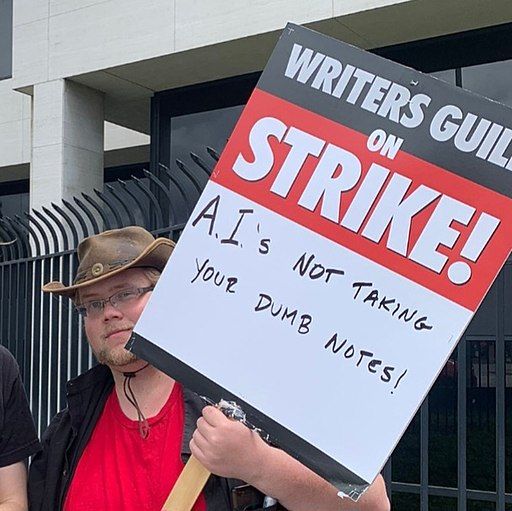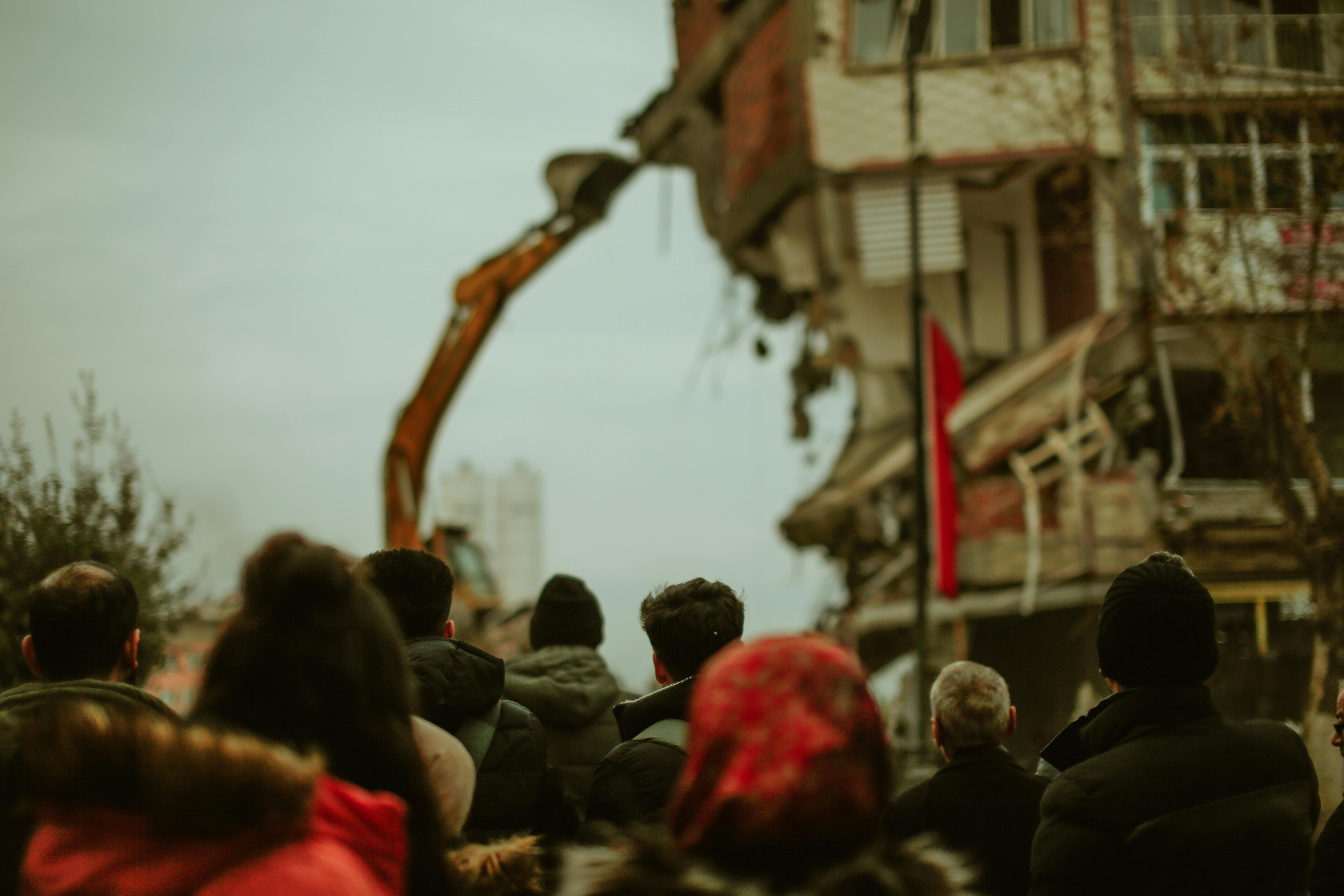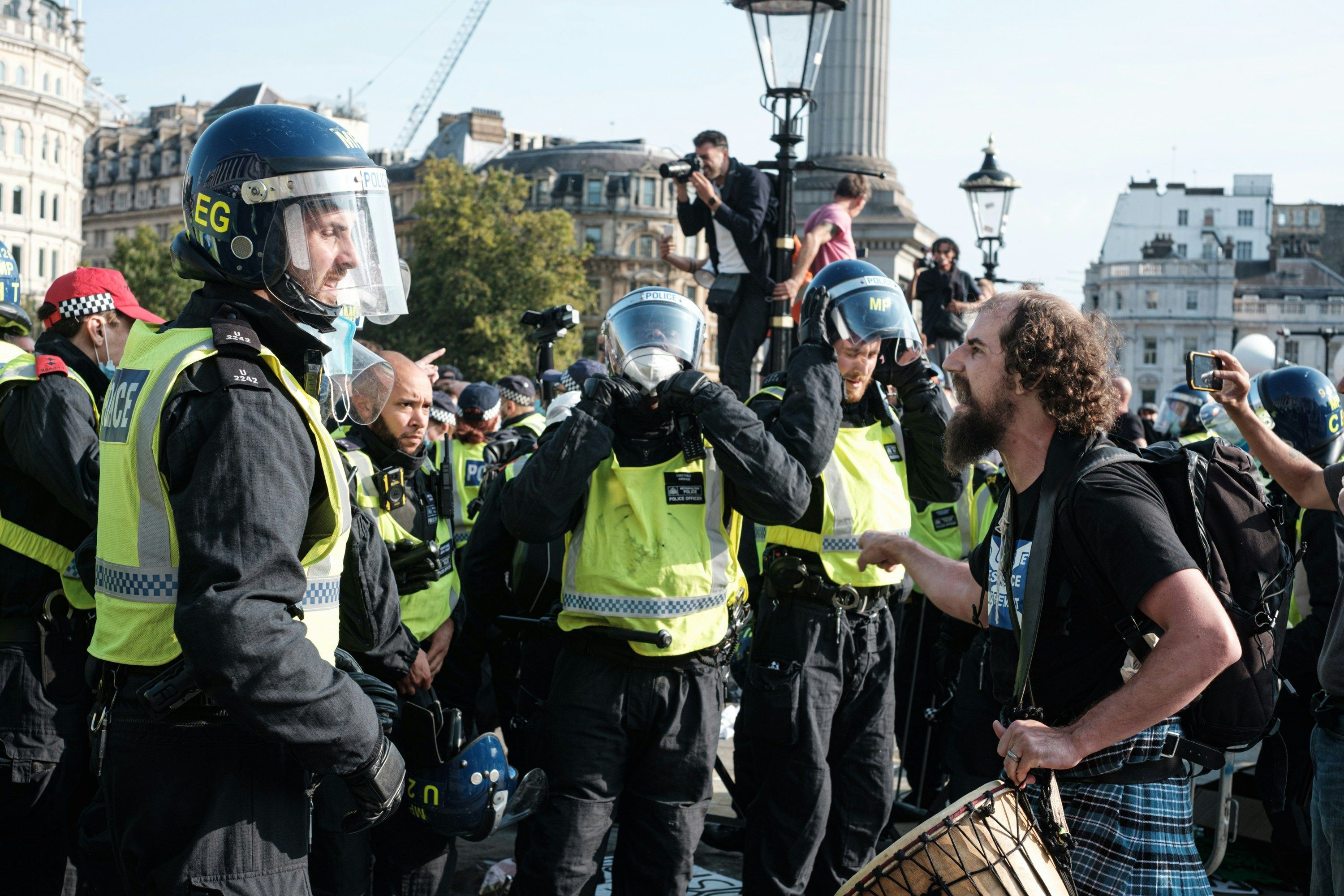The burgeoning field of Artificial Intelligence (AI) continues to push the boundaries of technology, weaving its capabilities deeper into the fabric of everyday life. From revolutionizing industries to enhancing user interfaces, the promises of AI are vast. However, this rapid advancement has not come without its concerns. The PauseAI protests represent a global movement arising from deep-seated fears about the uncontrolled progression of AI technologies. These concerns span a spectrum, from ethical dilemmas and privacy invasions to existential risks and the destabilization of employment across various sectors.
The Pause AI Movement

"AI Protest Sign 2023 WGA Strike" by David James Henry is licensed under CC BY-SA 4.0.
Origins and Objectives of the Pause AI Protests
The Pause AI movement emerged as a direct response to the rapid development and deployment of advanced artificial intelligence technologies. Protestors from the movement demand a temporary cessation on the development of cutting-edge AI models until thorough safety evaluations and regulatory frameworks can be established. This call for a "pause" is driven by fears that unchecked AI development could lead to unintended and potentially catastrophic consequences, ranging from job losses and erosion of privacy to more dire global security threats and destabilization. The movement advocates for responsible governance of AI, emphasizing that developments should only proceed with robust oversight and ethical considerations.
Core Allegations and Concerns Raised by the Protesters
Protesters of the Pause AI movement have raised several core concerns that underscore their demands. Key among these is the fear of AI systems becoming too powerful, surpassing human control and leading to potential existential risks. They point to the possibilities of AI-driven automation resulting in massive job losses across various sectors and exacerbating economic inequalities. Furthermore, moral concerns are highlighted regarding AI's role in creating deepfakes, perpetuating biases, and infringing on digital privacy. Protesters also criticize AI companies for prioritizing profits over safety and ethical implications, accusing them of neglecting the profound societal impacts of unregulated AI technologies.
Global Scope and Impact of the Pause AI Protests

Photo by Yakup Polat / Pexels
International Participation and Notable Incidents
The Pause AI protests have unfolded globally, with participants rallying in cities from London and San Francisco to Berlin and Sydney. This widescale mobilization reflects a growing international consensus on the potential risks associated with unregulated AI technologies. Notably, these demonstrations have drawn diverse groups, from tech insiders to academics and ordinary citizens who fear the societal impacts of AI. The protests have varied in scale and nature, ranging from peaceful rallies and public speeches to digital campaigns that aim to inform and engage a wider audience on the issues.
Responses from AI Companies and Governments
The reactions to the Pause AI protests from key industry players and governmental bodies have been mixed. Some tech firms have acknowledged the protestors’ concerns, suggesting a willingness to engage in discussions about ethical AI development and increased transparency in AI operations. Conversely, other companies have remained staunch in their developmental pursuits, emphasizing the positive impacts of AI advancements on innovation and progress. Governments have been similarly split, with some showing openness to implementing stricter AI regulations and others hesitating, wary of stifling innovation in a highly competitive technological landscape.
Analysis of Media Coverage and Public Perception
Media coverage of the Pause AI protests has played a crucial role in shaping public perception of the risks associated with advanced AI technologies. Reports have generally highlighted the movement's concerns about AI's potential threats, thus raising public awareness and sparking debates on the necessity and feasibility of a halt in AI development. Public opinion, influenced by such coverage, appears to be increasingly recognizing the need for careful scrutiny and regulations of AI technologies. This awareness is critical in driving forward the narrative that while AI holds remarkable potential, it also necessitates careful consideration of its broader impacts on society and human life.
Diverse Approaches and Tactics in Protesting AI

Photo by Tara Winstead / Pexels
Organizational Strategies and Protest Methods
The "Pause AI" movement has adopted various protest methods across different cities and countries, reflecting a spectrum of tactical approaches aimed at halting the advancement of AI technologies. In London, protesters have taken a direct approach by chanting and displaying signs outside government buildings, directly engaging with policymakers and the public. Meanwhile, the movement's leaders emphasize moderate tactics, avoiding highly disruptive actions like sit-ins or encampments, favoring legal and organized demonstrations that appeal to a broad audience. This strategic diversity is intended to maintain the movement's accessibility and respectability while still drawing significant attention to its cause.
Legal and Ethical Considerations in Protest Actions
The ethical framework guiding the "Pause AI" protests is clear: promote awareness and action through legal means while maintaining a non-violent stance. Protest organizers have been vocal about their commitment to legality and ethical integrity, underscoring the importance of trust and respectability in their activism. This approach not only helps in keeping the protests peaceful but also guards against the potential for public backlash which might undermine the movement's objectives and credibility.
Effectiveness of Various Protest Approaches
The effectiveness of different protest strategies within the "Pause AI" movement varies. In cities like New York, public engagement has had mixed results, with many passersby showing support, albeit skepticism about AI's unstoppable progression. The key to success appears to be the movement's ability to adapt its message and methods to different cultural and legal contexts across the globe, ensuring that it resonates locally while contributing to a coherent global narrative.
Future Directions and Challenges for the Pause AI Movement

Photo by Pavel Danilyuk / Pexels
Immediate Goals and Planned Actions
Moving forward, the "Pause AI" movement aims to strengthen its global presence and influence. Immediate goals include coordinating more synchronized global protests to coincide with major AI summits and increasing engagement with policy makers. Leaders of the movement are planning further demonstrations in major cities around the world, employing both in-person and digital campaigns to broaden their reach and impact.
Potential Obstacles and Opposition
The movement faces significant challenges from both AI companies and governments inclined towards AI development. Economically and politically, AI is seen as a frontier for competitive advantage, making comprehensive regulation and development pauses difficult to negotiate. Additionally, there's a constant risk of public and political fatigue, as AI integration becomes more normalized, potentially diminishing the urgency conveyed by the protesters' message.
Long-term Implications for AI Development and Regulation
In the long term, "Pause AI" advocates for stringent regulations and oversight mechanisms for AI technologies. This includes establishing national and international bodies to oversee AI development, akin to the proposed global AI safety agency. The goal is not just to slow down AI advancement temporarily but to ensure it progresses within ethical and safety boundaries that prevent societal harm. This proactive regulation approach aims to steer the global community towards a future where AI enhances human capabilities without threatening our autonomy or safety.







